POSTPRODUCTION
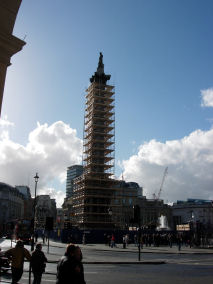
Approach postproduction in this way
| You have to get a 'new pair of ears' for radio drama postproduction. They are specific to radio drama. Don't start making a film sound-track. |
| Is this your first postproduction in radio drama? Some students mistake the balancing of music against dialogue, and sound effects against dialogue. They mix the music and the sound effects too loud. The dialogue is drowned. |
| SOLUTION: Listen to some excerpts from radio plays. Get a friend to critique your first draft. Play your work-in-progress to a focus group. |
| Begin - probably not at the start of your episode - but with the simplest scene. That will be dialogue PLUS atmos, and a few sound effects, if needed. You have to balance the atmos under the dialogue. See below - WHAT TO DO.
|
| Be creative! You do not have to follow established conventions. You can create new horizons in radio drama, and cross-over styles and cross-over genres. See 'filmic' at http://www.savoyhill.co.uk/technique/filmic.html |
| Discover more about how our ear-to-mind works. See 'listening' at http://www.savoyhill.co.uk/technique/listening.html |
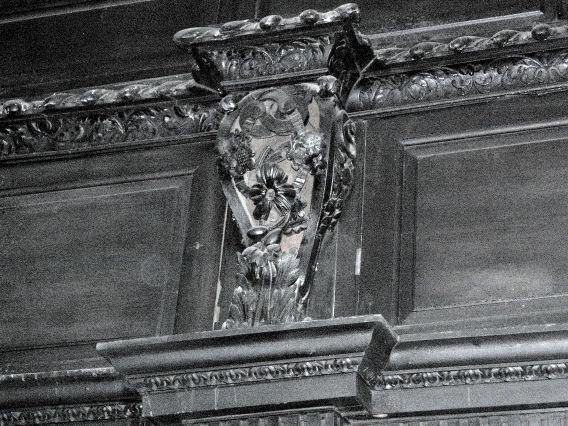
You have to supply for yourself some good quality earphones - at least £15 to £20. You cannot work on post-production without good quality earphones. You will not be able to assess levels accurately. And when you play your work in progress through some good speakers in the Studio, you will realise how you are hindering yourself.

WHAT TO DO - first steps in postproduction for a radio soap
| WORKING SYSTEM FOR POSTPRODUCTION IN THE RADIO SOAP 'FACTORY': You need to divide out the tasks so that everyone works efficiently. There are EDITORIAL DECISIONS about style and the FORMULA. |
| SOUND BOX (your archive of digital sound effects)- see http://www.savoyhill.co.uk/technique/soundbox.html |
| You now have to put together all that you planned in your SCRIPTING, and all that you have taken in PRODUCTION. |
| LOGIC - CONSISTENCY - each scene location must use the same atmos bed, so that the listeners recognise this location on through the episodes. Character movements through a scene must be logical. (A door cannot 'move' suddenly from left to right). You have to agree a map of each location. |
| YOU CANNOT GO BACK TO PRODUCTION - you just hope that you have got everything you need from PRODUCTION. It now too late! |
| INTERPRET THE SCRIPT AND THE PRODUCTION 'TAKES' - you can make changes.You are in control. You can move characters around the sound picture (panning). You can make a character enter the room (an approach by fading in). You can take the filmic approach in postproduction - as long as you have the dialogue in an editable condition. Now is your chance to be creative. |
| You agree on the SIG - the music the listeners hear at the beginning and end of each episode - see http://www.savoyhill.co.uk/soap/soap-sig-tune.html |

EVERY JOURNEY BEGINS WITH THE VERY FIRST STEP!
Example - five-minute episodes
| YOU DO A ROUGH CUT OF EACH OF YOUR SCENES (from the takes) |
| YOU PLACE THESE SCENES INTO YOUR COMPUTER SOUND EDITOR |
| YOU PLACE THE INTRO SIG MUSIC AT THE BEGINNING - AND THE EXTRO SIG MUSIC AT THE END |
| WHAT DOES THIS LOOK LIKE? WITH SCENE BOUNDARIES, DOES THIS MAKE UP FIVE MINUTES? Breathe deep! Over or under? |

| You just have to! If your material is over the limit, you have to get to it and cut to the limit. Get on with the tough challenge of cutting dialogue without destroying the meaning. You may have to remove a favourite line. |
| BUT - you cannot compromise the creative needs of the piece. DO NOT REMOVE ALL SILENCES. You have to respect SCENE BOUNDARIES and the structured rhythm of the whole piece. DO NOT COME UP WITH A 'THROUGH-COMPOSED PIECE' (no gaps) unless this is the creative choice. You probably have to include a silence in a scene boundary. You may not be able to cross-fade each scene. |
| DO NOT REMOVE SILENCES IN DIALOGUE. (There is a facility in Pro-Tools, Adobe Audition and other computer sound editing programmes for removing all silences.) Dialogue has to flow and breathe. Dialogue needs silences to make meaning. |

STYLES - be creative about your choice of style(s)
| Standard production. Most radio plays are directed and post-produced in this realist style. You do not have to stick to this. See http://www.savoyhill.co.uk/technique/standardproduction.html |
| Realism - VARIETIES OF REALISM - see http://www.savoyhill.co.uk/technique/realism.html |
| Filmic |
| Genres and cross-genres |
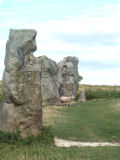
| SCENE BOUNDARIES - see http://www.savoyhill.co.uk/technique/sceneboundaries.html |
| Fades and straight cuts and silences - see http://www.savoyhill.co.uk/technique/sceneboundariesmore.html |
| PERSPECTIVE is the construction, width and depth of the sound picture - the three-dimensional aspect of the sound picture - see http://www.savoyhill.co.uk/technique/perspective.html |
| SIGNPOSTING |
| DESCRIPTION |
| SOUND CENTRE - the placing of the centre within the sound picture - see http://www.savoyhill.co.uk/technique/soundcentre.html |
| FIXED SOUND CENTRE - the centre of the sound picture remains fixed in the same place - see http://www.savoyhill.co.uk/technique/soundcentre.html |
| MOVING SOUND CENTRE - 'we go with' - the sound centre moves along with the characters as they talk (going 'up the garden path' so as to speak) - see http://www.savoyhill.co.uk/technique/soundcentre.html |

SOME RULES FOR THE CONSTRUCTION OF THE SCENE
| ESTABLISH SCENE AT TOP |
| RULE: FOR A CHARACTER SPEAKING AT THE BEGINNING OF A SCENE, WE NEED POSITION THREE (usually) - THE EQUIVALENT OF A FILM MEDIUM SHOT (head to knees). |
| We need to 'see' that character in (film term) MS - In mid-shot, the frame cuts across the subject at the knees. Medium long shot is a tight full-length figure. (MS = medium shot, MLS = medium long shot) |
| It is more difficult for the listeners to hear a new character at the top of the scene, if that person is in position four, further away from the microphone. A word or two shouted is fine. And then an approach to the microphone into position three. |
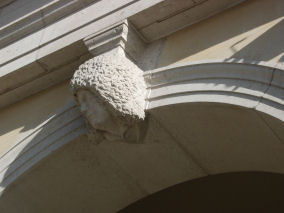
ATMOS (or atmospheres) - the 'scenery' under the dialogue
| ATMOS - The scene location or scenery is shown by the atmos, as 'open country', 'street with traffic', 'large factory', 'cathedral'. This forms a 'bed' underneath the scene dialogue. See http://www.savoyhill.co.uk/technique/atmos.html |
| ATMOS - (1) Choose an atmos from SOUND BOX, or (2) Create your own atmos yourself, or (3) 'Tweak' an atmos from SOUND BOX (make additions and changes to an atmos you have already). You almost always have to 'tweak' an atmos. Never just accept an atmos. |
| PROBLEM: The atmos file is too short for the scene. SOLUTION: Copy it and paste it at the end of itself. BUT check that where one file ends and the copy begins, there is a seamless join, and not a 'V' problem. You check that the listeners will not notice the join. If the join is noticeable, and there is a 'V' problem, then you have to repair this. (See immediately below.) Now you are ready to copy and paste again, until the atmos file is long enough. REPAIRING AN ATMOS: Go into multi-track. Copy a section of the middle of the original file across the join. Check this. It should provide the solution. |
| TWEAKING THE ATMOS FILE: You will nearly always need to tweak the original file. This means adding more sound effects to make the atmos more suited to that particular scene. |
| HOW TO USE THE ATMOS FILE UNDER DIALOGUE: You do NOT leave the atmos file at the same level underneath the dialogue. You nudge it up at bit and then down again, at suitable places in the dialogue. You choose these places carefully, being sensitive to the dialogue, particularly from about 30 seconds into the scene. WHAT IS THE REASON FOR THIS? There is a LAW OF DIMINISHING RETURNS about the background atmos. After a shortish while, the listener will cancel it out, and disregard it. That is the ear-to-brain mechanism. |
| See also http://www.savoyhill.co.uk/soap/soap-reduce-fxs.html |

| The technique for establishing the location at the beginning of a scene. Signposting is like the establishing shot in TV and film. See http://www.savoyhill.co.uk/technique/signposting.html |

| See 'Added words in the dialogue to fill in what is 'blind' for the listener' at http://www.savoyhill.co.uk/technique/description.html |

Marking students' work - PLEASE NOTE - Alan Beck's experience
| I will make new comments - and some new issues will arise. There will be some new points that I have never made before. This is in the nature of marking - there are always new notes as a project reaches completion. |
| I may have difficulty listening to your work on headphones in class. So I am now listening in ideal conditions when marking. |
| In the creative development of script, things change. A script decision I have agreed to is only provisional at each stage. As the drafts emerge, then new decisions are needed. Please do not get caught in the syndrome 'but you agreed to this earlier'. All depends on the final product. All must serve the main purposes of the soap - quality scripting, characterisation, production, post-production - THE BROADCAST. |
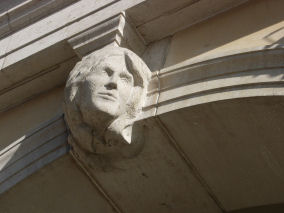


To WELCOME PAGE
Radio Soap (serial drama) - HOW TO MAKE IT
Five-minute episodes - or short episodes
Step by step instruction from Alan Beck.
Learn about radio drama on this site along with my book - Beck, Alan, Radio Acting, London: A & C Black (1997) ISBN 0-7136-4631-4
This is how to make a short-form soap - entertaining (above all) and you can include issues (issues that could influence the listeners' behaviour).
Further: production, scripting, web site, marketing, focus group meetings, drop-in script, copyright material logging, trails, soap launch.
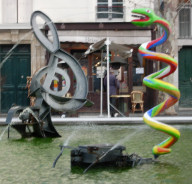
LINKS WITH OTHER SITE
Radio Drama - directing, acting, technical, learning & teaching, researching, styles, genres
This is a complete curriculum of scripts, techniques, advice, sound files - effects and atmoses (with no copyright and so free to use), detailed script commentaries, etc. -
Contact: [email protected]
This site's address: http://www.savoyhill.co.uk/soap/index.html
